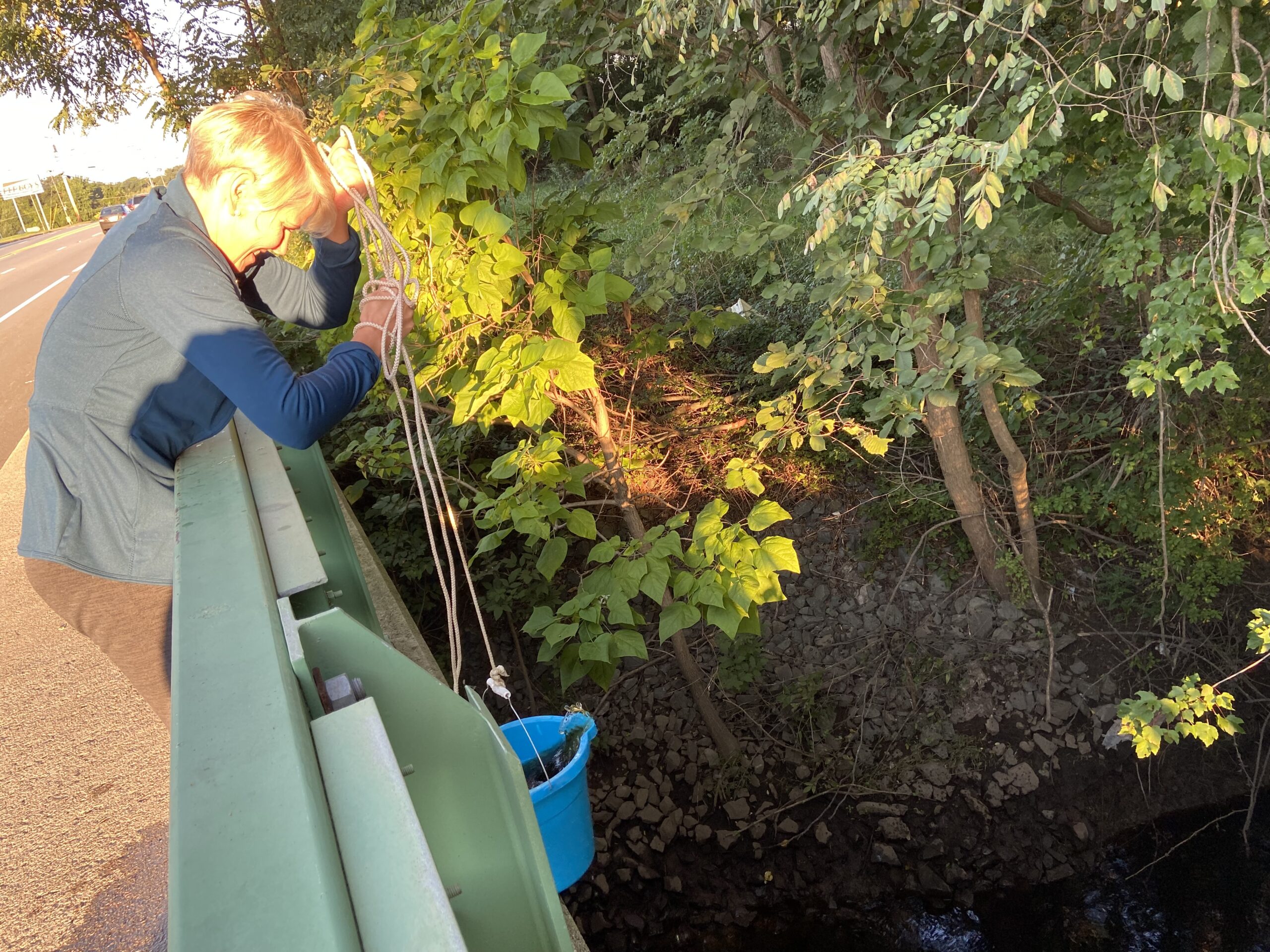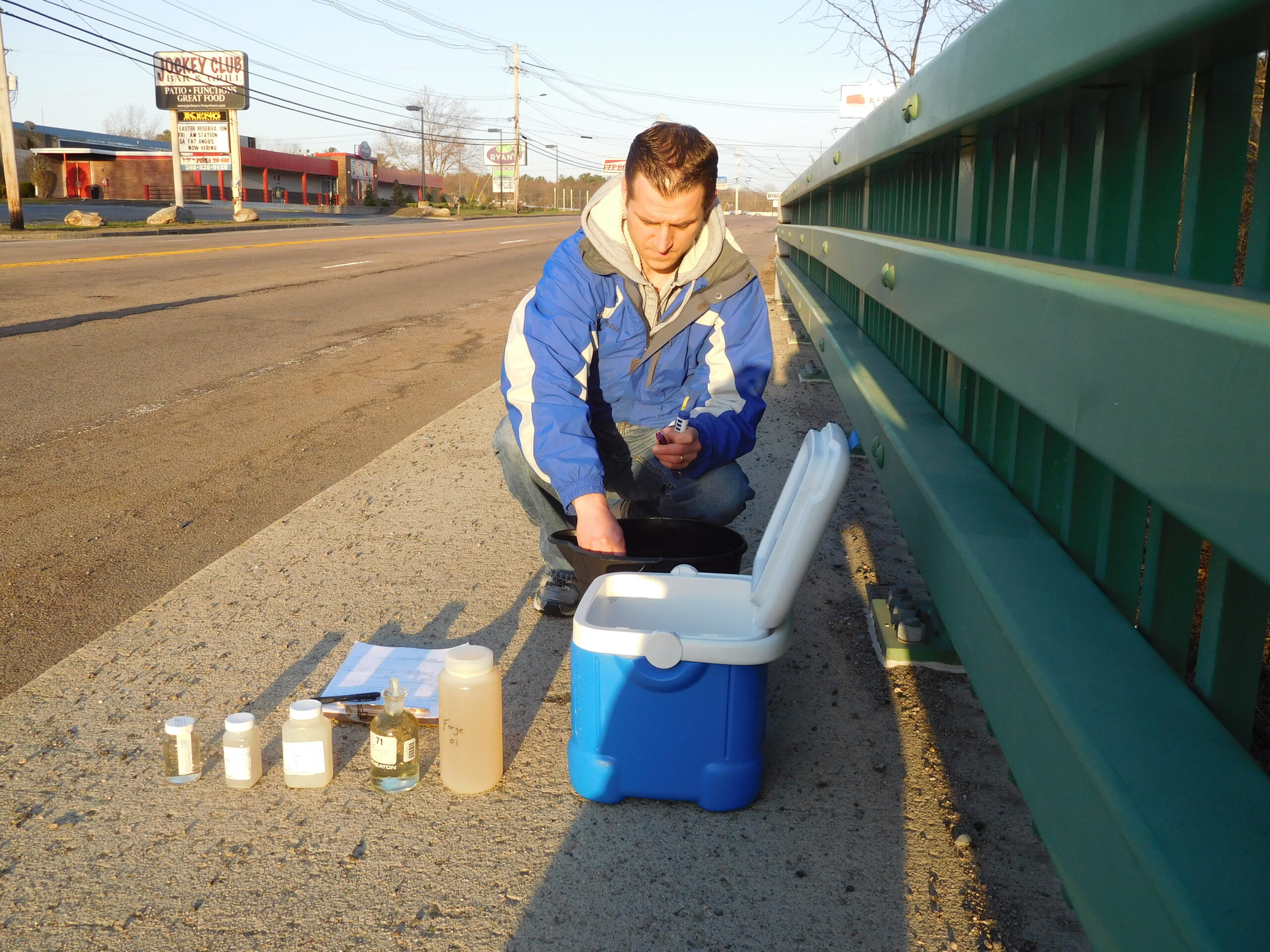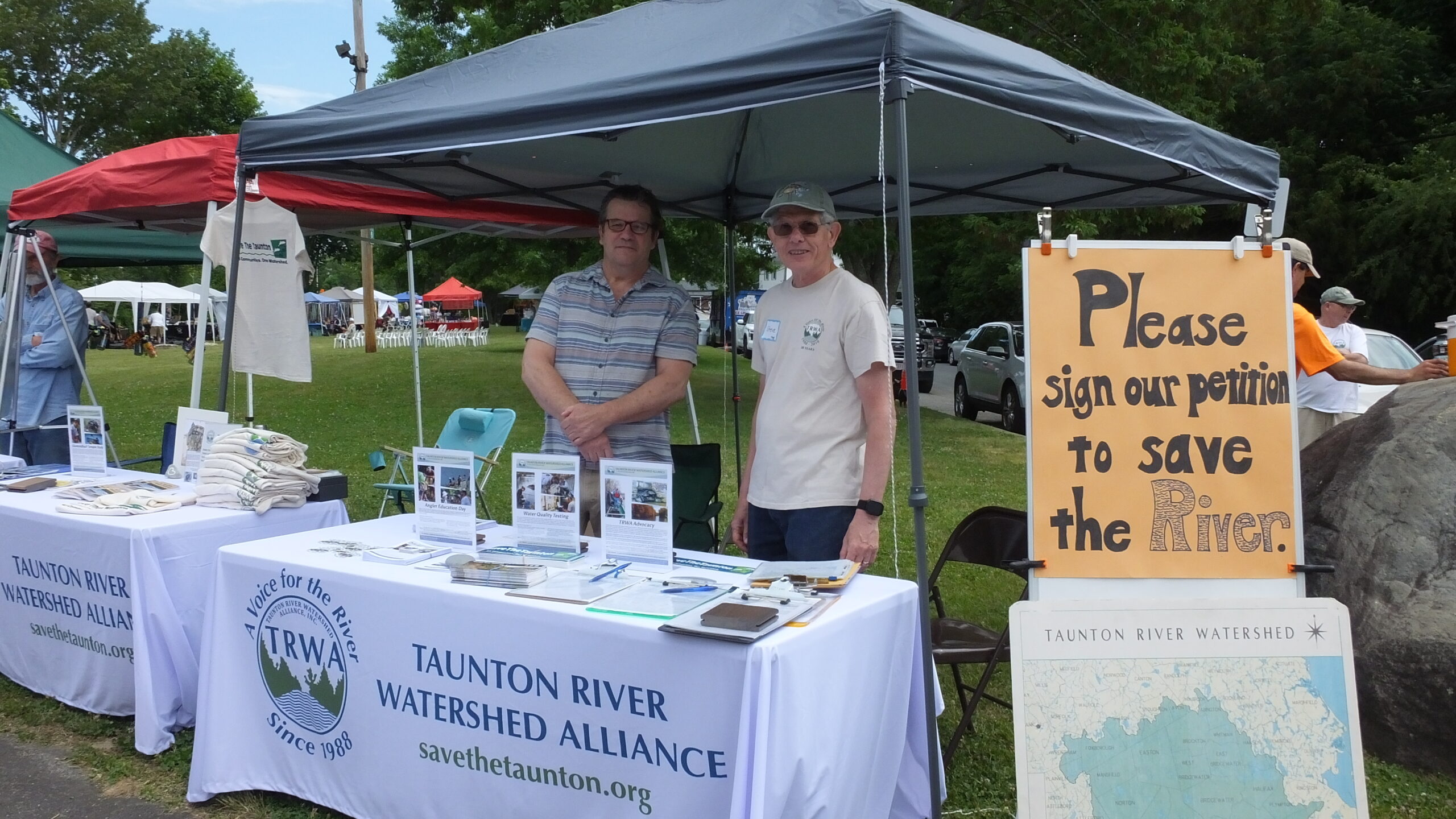We have received the July sampling results. Our most recent sampling summary spreadsheets showing the results for April through July are available here and at the Water Quality Monitoring TRWA website home page tab if you click on the sample bottles picture or link in the Documents section.
Despite high stream flow to dilute wastewater discharges we saw elevated nitrate concentration values in the Matfield River and Taunton main stem. This demonstrates a watershed with too much nitrogen and illustrates the importance of EPA issuing new permits to Somerset and Fall River with nitrogen reduction requirements to help reduce overall nitrogen in the estuary. We are working with Save The Bay in RI and have a meeting with EPA to discuss permit issuance scheduled for early next federal fiscal year (October).
The high stormwater runoff resulted in elevated phosphorus measured in-stream illustrating a need for better stormwater management in the watershed. EPA Region 1 was recently ordered by federal court to improve stormwater management in the Charles, Mystic and Neponset River watersheds around Boston by requiring permits for currently unregulated commercial sources. With this recent decision, the EPA has a clear timeline: they are required to issue these draft permits by September 2024, which is a huge step for ensuring cleaner water in local Boston rivers! Read the CLF article here>>. The hope is this program once developed will be expanded to other areas suffering stormwater caused water quality standards violations including the Taunton River watershed.
The most dramatic results from the July sampling are the bacteria results. All locations violated the water quality standards by substantial margins. This is another indication of inadequate stormwater management. Currently MassDEP has stormwater regulations which, like EPA’s, are only applicable to new commercial development. The regulations were developed in 1996 and last updated in 2008. They use a stormwater flow estimation method developed over 40 years ago. This is obviously not adequate considering the more intense storms we see today from climate change. There is a working group attempting to develop updated regulations since February 2020 read about the working group here but the pace is glacial while climate change effects are happening fast. TRWA is working with the other state watershed groups to try to hasten this effort.
As shown on our Google map of sampling locations MassDEP has 2 continuous monitoring stations in Mount Hope Bay. In 2017 and 2018 these sites were measuring more violations in the driest years. Recent monitoring has measured more dissolved oxygen water quality criteria violations in wetter years demonstrating the impact of inadequate watershed wide stormwater management and the City of Fall River’s 19 combined sewer overflows.



